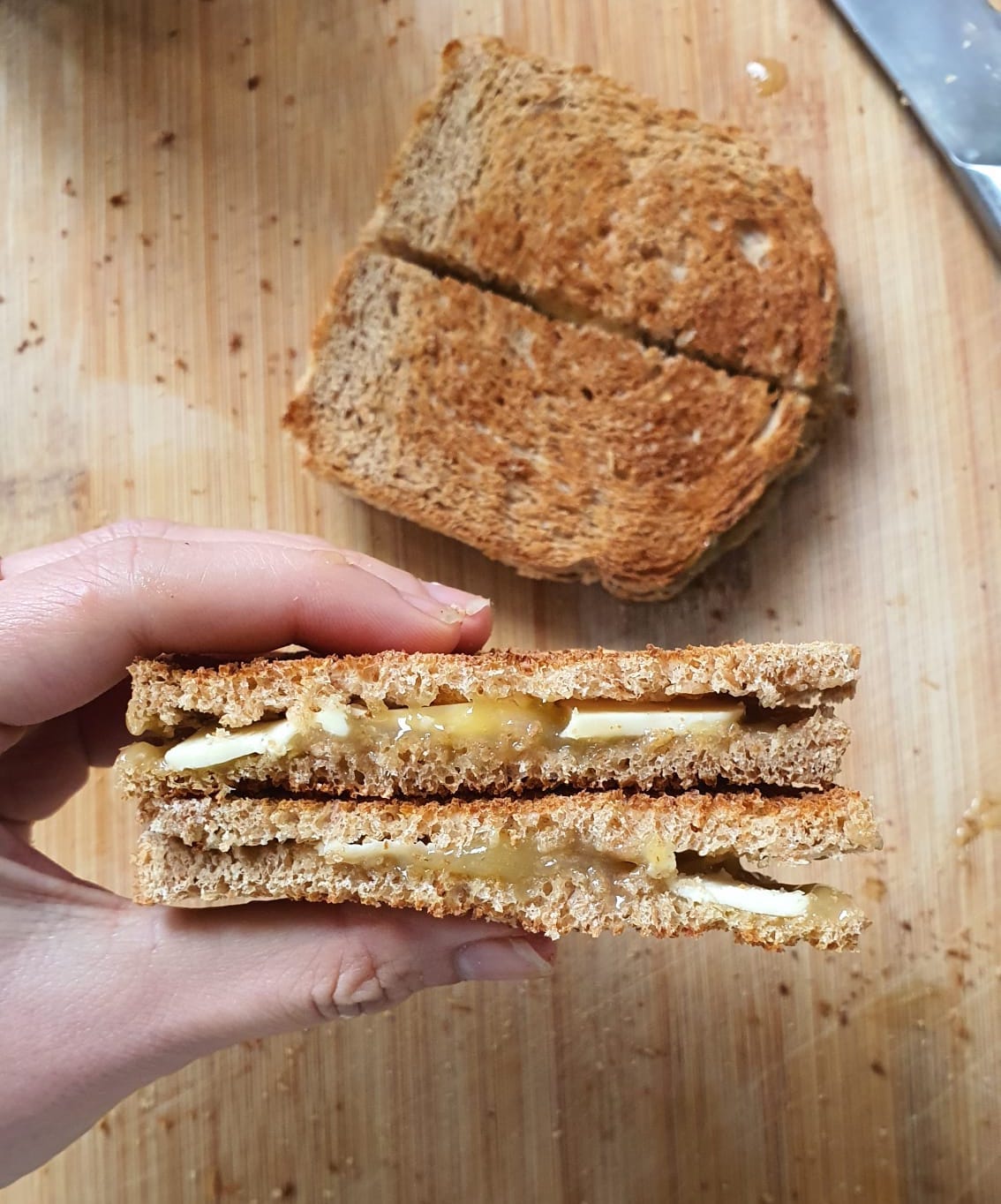Homemade kaya is endlessly versatile. It’s great used as a filling between cake layers, slathered over sponge and rolled up to make swiss rolls, or enjoyed as a dip for glutinous rice. But the simplest and, I argue, best way to enjoy it is on toast.
The kaya toast was birthed in Singapore’s kopitiams by the Hainanese. Arriving only after 1870, the Hainanese were latecomers to Singapore. With jobs in most trades already dominated, they took up work that was considered undesirable, such as being cooks in British military bases, homes, restaurants and ship galleys. During their employment, they observed the British habit of having coffee, toast and eggs for breakfast, and learnt to make traditional European treats, such as caramel, bread, fruit jams, pastries and so on.
When the shocks of the Great Depression hit Singapore, shop units along Middle road, Purvis Street and Seah Street fell vacant. The Hainanese, sensing opportunity, quit their jobs and bought the shops, turning them into kopitiams using their culinary and service skills. Western coffeeshops typically served coffee made from high-quality Arabica beans, but the Hainanese could only afford cheap Robusta beans. They thus enhanced the beans by roasting them with margarine and sugar. Following what they observed in British households, sugar and milk were added to the brewed kopi, though the latter came in the form of condensed milk as the kopitiams lacked refrigeration.
Kopitiam bread
Inspired by the British, the Hainanese paired their coffee with kaya toast, even though compressed glutinous rice was the more conventional pairing for kaya at that time. The bread was often homemade. My friend Judy Zhang, who did a stint at one of Singapore’s last traditional bakeries Sing Hon Loong, tells me that kopitiam bread uses no eggs, milk or butter due to the lack of refrigeration in traditional bakeries, and the high costs of dairy. In place of butter, vegetable shortening is used as fat to add softness to the loaf. Liquid molasses is also sometimes added to the loaf to produce a brown variant. The trademark of the bread is that the crusts are cut off; this is because the traditional charcoal-fired ovens used often resulted in burnt crusts.
My preference for kaya toast is the way Ya Kun, probably the most famous Singaporean kopitiam, prepares it. Toast your bread very well, either in an electric toaster or over charcoal. Using a serrated knife, split the bread in half, exposing the steamy, fluffy middles. Smear kaya on generously, and top with slivers of butter. (There was a time where I would have gone for butter slabs so thick that biting through the toast would leave teethmarks, but unfortunately my metabolism has slowed.) Salted butter is best and, especially if you’re going for thick slabs, it’s best to use European butter or cultured butter because it really shows.
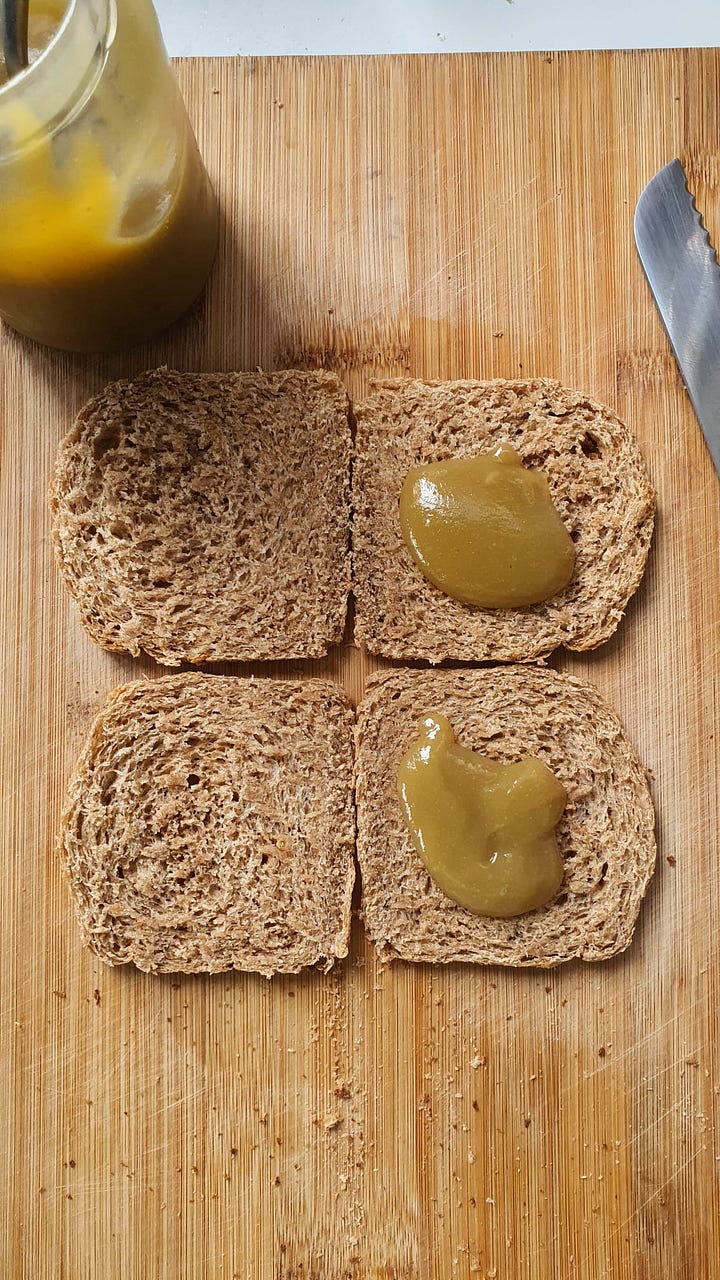
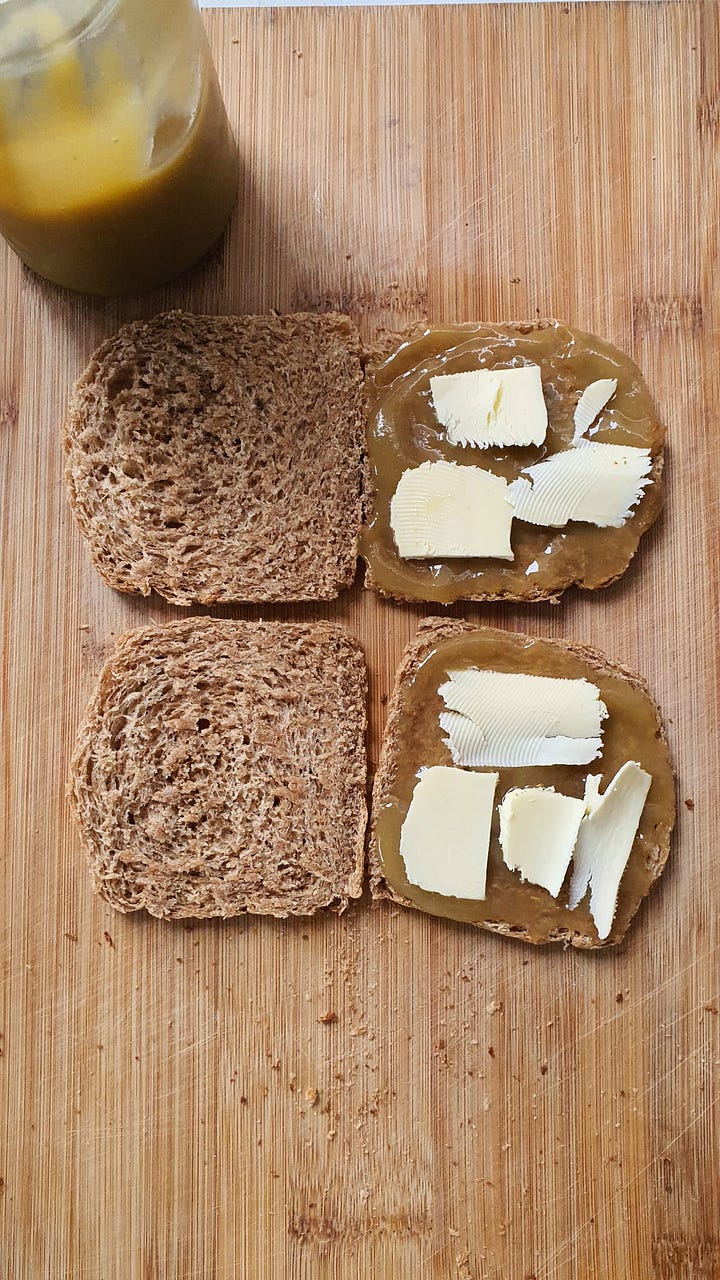
Slice the sandwiches in half. Kaya toast made this way, to me, is sublime. The whole thing crunches like a cracker, making the ooze of kaya even more seductive. The usual, crusty European bread (particularly sourdough) is not suitable for making kaya toast; the silkiness of the kaya is lost in the crumb’s coarse and firm chew, and the bold flavours overwhelm the delicate interplay of pandan and coconut. Because it’s so difficult to find kopitiam-style bread outside of Singapore, I make my own (recipe at the end of this newsletter).
Eggs
Kaya toast is typically served with soft-boiled eggs, which I realise means a different thing in the West. While only the yolk of the Western-style soft-boiled egg is creamy, both the yolk and whites of the kopitiam egg remain tender and velvety. This style of egg is also known as onsen tamago in Japan.
In Singapore’s hawker centres and kopitiams, the eggs are steeped, covered, in boiling water for approximately 6 to 7 minutes. This method, however, tends to be hit or miss. Recently, Mun Yi graciously taught me a foolproof method to produce perfect eggs. Place your eggs in a ricecooker pot. Pour boiling water over the eggs. Adjust the temperature, if necessary, to 65-75°C with room temperature water. Pop the lid on and set the rice-cooker to the ‘keep warm’ setting. Cook 30 minutes for molten yolks and 45 minutes for jammy ones.
The standard way to eat the eggs is to break up the yolks and mix them up with the whites, along with the standard seasonings of dark soy sauce and white pepper, so that they form a dip for the toast. There are also some who would lift the entire saucer to their lips and swallow the eggs whole 😂 Truth be told, I’m not the biggest fan of runny eggs, but the kaya toast set is such a quintessential Singaporean breakfast that I’ll make an exception.
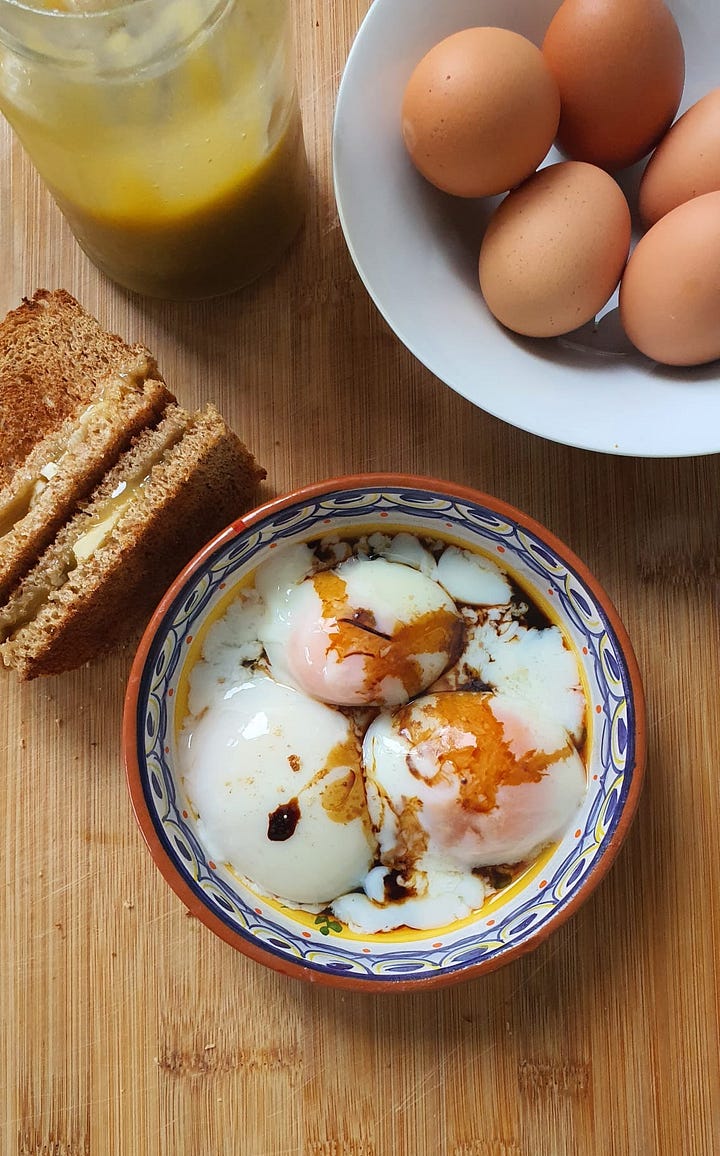
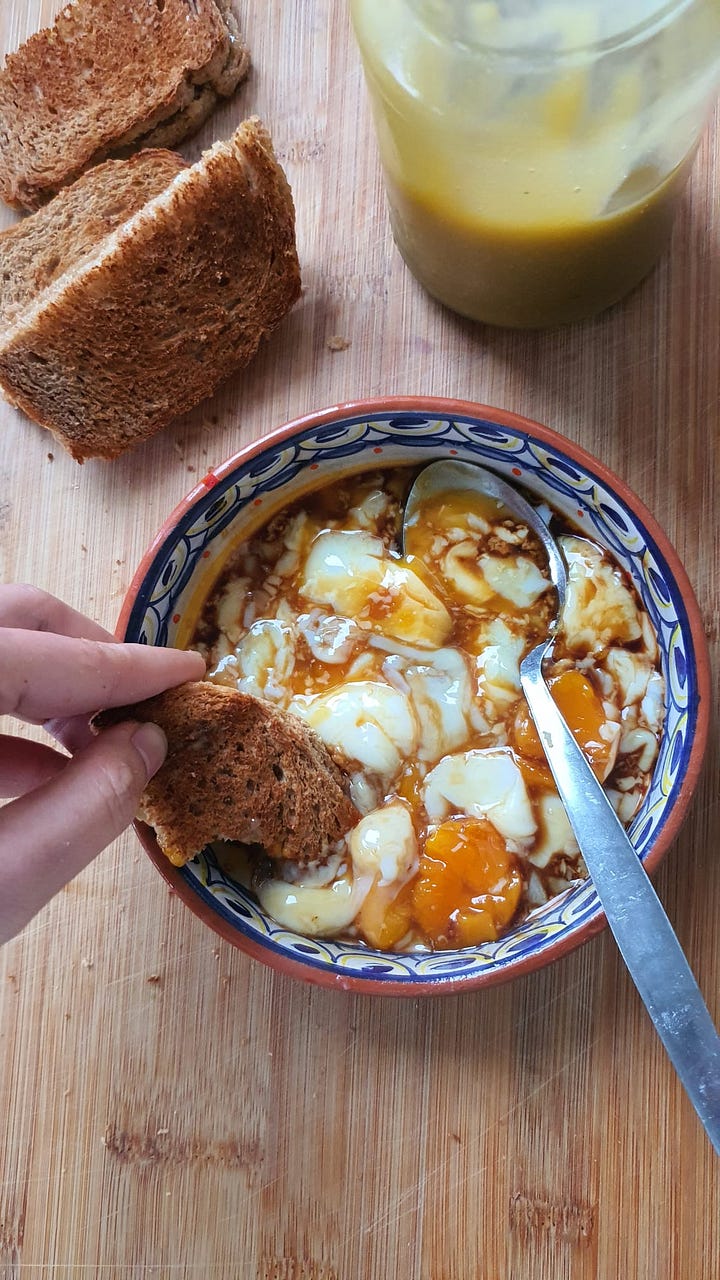
Kopitiam bread
Makes 1 loaf




